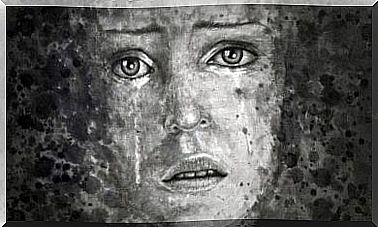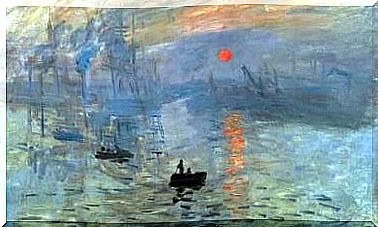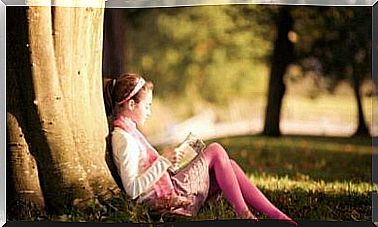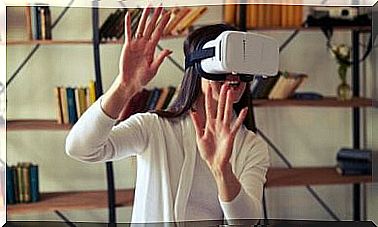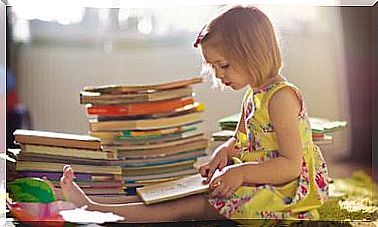The “puzzle Class”, A Return To Integration In School
“Together we are strong.” This statement perfectly sums up the purpose of the “puzzle class”. The “puzzle class” is a type of class in which the students are taught social integration, cooperation and empathy.
From age six and up, a child’s brain develops to the point where you can explain things to them. You can explain to them how not to behave badly and how to control themselves. That is why a child’s school years are one of the best times to create behavioral habits based on peaceful and respectful coexistence.
The first year at school is a challenge for the children
For most children, the first day of school is a huge change. After all, they are no longer little babies at home. Rather, they are learners who have to take on new responsibilities and duties. In addition, they must learn to play different roles.
One of those roles is the role of “pupil”. It means learning how to interact and form relationships with other children of the same age group and culture, or with children outside their age group and culture. In addition, they are given new role models and guidelines. They then learn to use it to question and judge themselves and everything around them.
The new social reality
Their postures will also change and their brains will receive new stimulation. Just imagine what a class with a mixture of religions, customs, skin colors and educational backgrounds can do for them. But if they adapt to this from the wrong point of view, then things can get very complicated.
More migration means that a monocultural society changes into a multicultural one. It is therefore important to realize that this can actually be a great opportunity to teach the children about tolerance, coexistence and social and cultural respect.
This is where the “puzzle class” comes in. Elliot Aronson invented this technique. It led to very good results in groups with different educational levels and learning styles.
The “puzzle class”: profitable, effective and easy to apply
The “puzzle class” is a collaborative learning technique with the aim of strengthening the main structure (the class). It uses the continuous interaction and connections between the pieces (the children). It has a dynamic and functional yet simple methodology. Basically it works by creating groups in which the classmates have to work together on a task to achieve a common goal.
The strategy sees each child as a key part of a group that only makes sense if everyone communicates, works together and has the same goal. In school, children can have many different positions (the popular children, the marginal students, the “rejected”, the “rebels”). But in the “puzzle class” these roles fade.
The structure of the “puzzle class”
The origin of prejudice in children usually comes from influences that are beyond the control of the school. But teachers are the people who build on the foundations laid at home. In addition, they must be effective mediators. So how do you develop this technique to make sure it works perfectly?
- First you explain the technique: You show the children what it is, what their role is and what the objective is. It also motivates them and teaches them the fundamental social skills for group interaction. The teacher should emphasize how each student should cooperate and row the boat in the same direction.
- Then you form the groups of the “mothership”: These groups must consist of 4 or 5 students from different cultures. The teacher should divide the learning objective into as many categories as there are people in the group. Take, for example, language education in primary schools. One student can look up the synonyms, another the antonyms. A student can change the order of a sentence. Another student can check which word is “out of place”…
- The next step is to form groups of “experts”: The students of the same category come together in this group. Here they are going to discuss and express themselves. We continue with our last example. One group of experts will only look up the synonyms for a word. Meanwhile, another group will only look up the antonyms, and so on.
- Finally, they reunite with the “mothership” group: Each expert returns to his mothership group. There they explain the results and what they have learned to the rest of their group.
The benefits of the “puzzle class”
Compared to other traditional methods, the “puzzle class” has many advantages. This technique promotes relationships between students of different ethnic backgrounds.
Here are the advantages of the “puzzle class” technique:
- It helps students to think critically and develop emotional intelligence about cultural aspects. That being said, they may not be mature enough yet to truly awaken their moral side.
- This technique confronts them with different points of view while at the same time taking into account the ideological and cultural differences of each student. It also boosts their skills.
- It encourages empathy and positive personal contact between students. In addition, it develops their sense of civic duty and solidarity.
- The “puzzle class” ensures the development of social skills. They are needed to interact with their group. They learn to express their point of view in an assertive, non-coercive way.
- It promotes intelligence and creativity. Because it teaches them new intellectual skills.
- This method teaches them to learn independently. When children get older, it is good to give them some independence. In this way they can make decisions for themselves and build their safety and confidence.
We conclude with this summary. The “puzzle class” is a collaborative learning methodology. It has been very effective in promoting a school environment of peaceful coexistence, regardless of the age of the students.
It helps them to adopt behavioral habits based on tolerance and mutual respect. This technique promotes intellectual and cognitive development associated with collaboration and social action.
